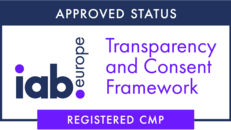Data Use Cases
Put simply, a Data Use Case is a business purpose for which data is collected, transformed, processed, or stored. It is the term Ethyca uses to refer to what GDPR calls Data Processing Activities and CCPA refers to as the building blocks of Data Inventory.
What’s a Data Use Case?
Put simply, a Data Use Case is a business purpose for which data is collected, transformed, processed, or stored. It is the term Ethyca uses to refer to what GDPR calls Data Processing Activities and CCPA refers to as the building blocks of Data Inventory. To comply with regulation, many companies define a similar term in their Data Processing Addenda.
A Data Use Case is the primary unit that Ethyca uses to map flows of data in your business. The sum total of all the Use Cases in your business is equivalent to the entirety of your business’s data map.
Put differently, Ethyca builds your data map by by visualizing all the different systems in all the different Data Use Cases for your business. In the data map diagram below (stylized for illustrative purposes) we show how a single Use Case can include multiple data integration and data lifecycle phases.
How Do I Create Data Use Cases in Ethyca?
Once you’ve created an account with Ethyca, you’ll be prompted to create Data Use Cases for your organization. Each one is a descriptive name of the business purpose for which your organization uses certain data. Some common examples may include “SMS Marketing”, “Payment Processing” or “Account Management”.
Next, you’ll fill in details about each DUC, and by doing this, you’ll give Ethyca the information it needs to plot your business data map. The required fields you’ll need to fill out are:
| Consent Required? | Does this DUC require consent from users in order to be executed? |
| Personal Data Fields | What fields of personal data are involved in the execution of this DUC? |
| Data Lifecycle Field(s) | What phases of data’s journey through your business does this DUC touch? You can learn more about classifying Data Lifecycle phases here. |
| Opt-In Required? | As a second layer on top of the consent question, does this DUC require users to actively opt into the use of their data in order to be executed? |
Creating or Modifying Use Cases in Ethyca’s Control Panel
Ethyca’s self-service onboarding flow will prompt you to set up Data Use Cases, but if you’re part of a large business, it’s unlikely you’ll be able to configure all the different ways your business uses data in one sitting.
Luckily, you can also create Data Uses Cases from the control panel in Ethyca’s app. In the Control Panel interface, you’ll see the same field options from above, along with a section for adding consent flags to the Data Use Case.
Consent flags are linked to users’ consent preferences in your company’s dedicated Privacy Center. If a user withdraws consent from an activity on the flag list – say “Marketing “SMS” – their data will no longer be used in this Data Use Case.
From Paper to Power: Reflections on the 2025 Consero CPO Summit
Read MoreAt the Consero CPO Summit, it was clear: privacy leaders are shifting from compliance enforcers to strategic enablers of growth and AI readiness.
JustPark Chooses Ethyca to Power Global Privacy and Data Governance
Read MoreJustPark has selected Ethyca to power its privacy and data governance, enabling trusted, consent-driven data control as the company scales globally.
Closing the AI Accountability Gap: Solving Governance with Data Infrastructure
Read MoreWithout infrastructure to enforce it, AI governance becomes costly theater destined to fail at scale.
The Engineer’s Burden: Why Trustworthy AI Starts with the Data Layer
Read MoreTrustworthy AI begins with engineers ensuring clean, governed data at the source.
Google Tag Manager Is Now a Legal Risk: German Court Ruling Redefines the Consent Perimeter
Read MoreKey takeaways from a German court ruling that redefines consent requirements for using Google Tag Manager.
The Knowledge-Action Gap in AI: What Real Governance Requires
Read MoreMost AI governance tools fail because they focus on observation over control -documenting risks without providing the infrastructure to act on them.
Ready to get started?
Our team of data privacy devotees would love to show you how Ethyca helps engineers deploy CCPA, GDPR, and LGPD privacy compliance deep into business systems. Let’s chat!
Speak with UsSign up to our Newsletter
Stay informed with the latest in privacy compliance. Get expert insights, updates on evolving regulations, and tips on automating data protection with Ethyca’s trusted solutions.



